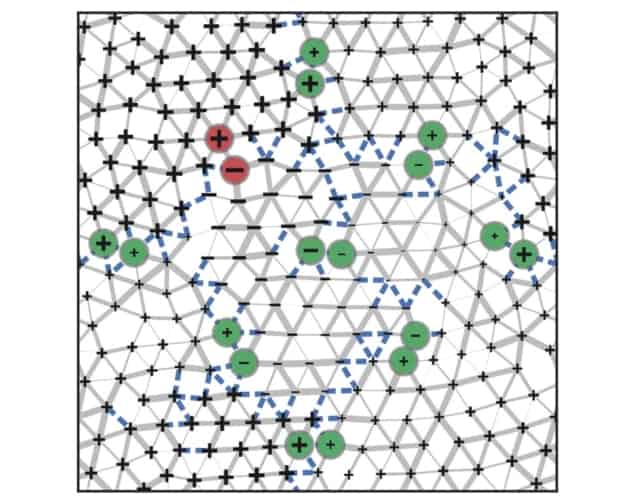
We have all heard of multitasking, but did you know that components of your body are also able to do more than one thing at a time? For instance, many proteins in the body are capable of catalysing more than one reaction, and the system of blood vessels in the brain is able to enhance flow and delivery of oxygen and nutrients to more than one region at once. So is there a limit to this multifunctionality? According to a new study, yes, there is (PNAS 10.1073/pnas.1806790116).
Many complex systems in biology can be thought of as networks. These networks perform tasks by controlling connections within the network, called “edges”. This view is useful in understanding biological systems at a fundamental level, which in turn can lead to improved therapeutics and biologically-inspired engineering.
A team of physicists in the US has studied tunable networks to investigate the limits to how many functions can be successfully fulfilled simultaneously. The researchers had previously been inspired to explore the properties of two different kinds of biological networks: flow networks, used to study blood flow through a network of vessels; and mechanical networks, which can be used to model the properties of folded proteins.
The research groups of Eleni Katifori and Andrea Liu at the University of Pennsylvania independently studied flow networks and mechanical networks, respectively. Both teams’ goal was to understand the inherent levels of functional complexity within their respective networks.

“It was two entirely different physical networks, but in a way the same question,” says Katifori. Knowing that the two systems are mathematically related, both groups were interested in investigating whether there is a limit to the degree of task complexity that each network is able to perform.
The authors defined “task complexity” as the number of simultaneous functions composing a specific task. They constructed the two networks by developing sets of mathematical equations that assign a cost to (flow and mechanical) networks that fail to accomplish these tasks. The researchers then used simulations to optimize or “tune” the network to control the degree of complexity of the tasks they could perform.
They found that both types of networks are able to accomplish surprisingly complex tasks. A protein-sized network can perform tasks composed of over a hundred different functions. However, they also discovered that there is a limit to multifunctionality that is almost identical in character in both flow and mechanical networks. In other words, the extent of multitasking is dependent upon the optimization conditions (constraints) that the team assigned to each network in order to accomplish multifunctionality. Upon reaching the limit of multitasking, both networks face a phase transition that determines the maximum complexity of tasks that can be tuned successfully.
“We want to understand what aspects of the network’s structure are important,” says Jason Rocks, co-first author of the study. Based on these results, one possible future direction will be to examine how the ability to perform tasks is encoded into networks. The answer to this question may help biomedical researchers learn more about enzymes (an example of a mechanical network) in order to design targeted drugs and treatments.
The team is performing ongoing studies based on this work, including the use of topology to understand the relationship between network structure and function and how robust functions are to changes in connectivity once they are tuned in.



